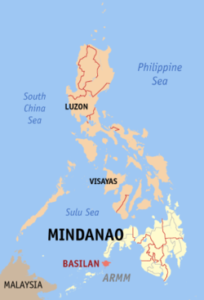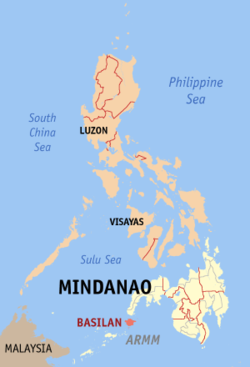 The Philippine Department of Transportation (DOTr) has issued a memorandum circular on the establishment of a transit corridor in Moro Gulf and Basilan Strait as a means to protect vessels crossing the area from pirates.
The Philippine Department of Transportation (DOTr) has issued a memorandum circular on the establishment of a transit corridor in Moro Gulf and Basilan Strait as a means to protect vessels crossing the area from pirates.
“This circular aims to address increasing threats to shipping in the areas…by providing a recommended transit corridor and measures to prevent or suppress acts of piracy and armed robbery against ships transiting said maritime areas,” the memorandum circular said.
Memorandum circular no 2017-002, dated March 31, 2017 and signed by Transportation Secretary Arthur Tugade, will cover all vessels, including fishing boats, which pass through the Moro Gulf and Basilan Strait.
The system involves the issuance of an identification number for each vessel by the Philippine Coast Guard (PCG).
A certificate, which is valid for three years, will be issued as proof of compliance, a copy of which should be presented during inspections.
DOTr Secretary for Maritime Felipe Judan, in a text message to PortCalls, said they are preparing more measures for a comprehensive maritime security plan to ensure the safety and security of vessels.
Last January, DOTr had directed PCG to increase its presence and conduct more patrols in the waters off Zamboanga Peninsula and Basilan following reports from domestic shipping lines of increased piracy and hijacking incidents in these areas.
This came about after the Philippine Inter-island Shipping Association (PISA) sent a letter to DOTr January 12 asking Secretary Tugade, through Judan, for “intercession to request the Philippine Navy to participate in patrolling the subject areas to augment the patrols being conducted by the PCG thereat” amid the recent spate of piracy and hijacking cases in these areas.
In his letter to PISA, Judan replied that the transport department had taken note of the serious concerns raised by the association on the problems of piracy and hijacking at sea and its impact on shipping, particularly on vessels navigating southern Philippines.
Judan said that in a meeting with PCG on January 17, Tugade extended his full support for the actions being taken by the Coast Guard.
Moreover, aside from increasing maritime patrols, “the Secretary has approved-in-principle several proposed circulars that would enhance maritime security in southern Philippines such as Safety, Security and Environment Numbering (SSEN) System, the establishment of a Transit Corridor (TC) at Moro Gulf and Basilan Strait, and the implementing circulars on Maritime Security Communications Protocol.”
Judan said PCG projects, such as acquiring high-speed patrol craft and other equipment that can respond to incidents like piracy and hijacking at sea, will be prioritized.
According to International Maritime Bureau’s (IMB) annual piracy report for 2016, charterers and owners of vessel are advised to avoid the Sulu Sea by routing vessels west of Kalimantan. IMB said kidnappings in the Sulu Sea between eastern Malaysia and the Philippines are a particular concern.
READ: Maritime piracy report sees first Somali hijackings after five-year lull
Sulu Sea is located in southwestern Philippines, separated from the South China Sea in the northwest by Palawan and from the Celebes Sea in the southeast by Sulu Archipelago.
The IMB report said the kidnapping of crews of merchant vessels in the Sulu Sea and their transfer to the southern Philippines represents a notable escalation in attacks. In the last quarter of 2016, about 12 crew members were kidnapped from two cargo vessels at sea and from an anchored fishing vessel, and in November a bulk carrier was fired upon by pirates. Earlier in 2016, crew members were kidnapped in three separate attacks on vulnerable slow-moving tugs and barges. – Roumina Pablo





